THE DRAWING IS ON STAGE (IL DISEGNO E’ DI SCENA), FOYER TEATRO INDIA – ROME
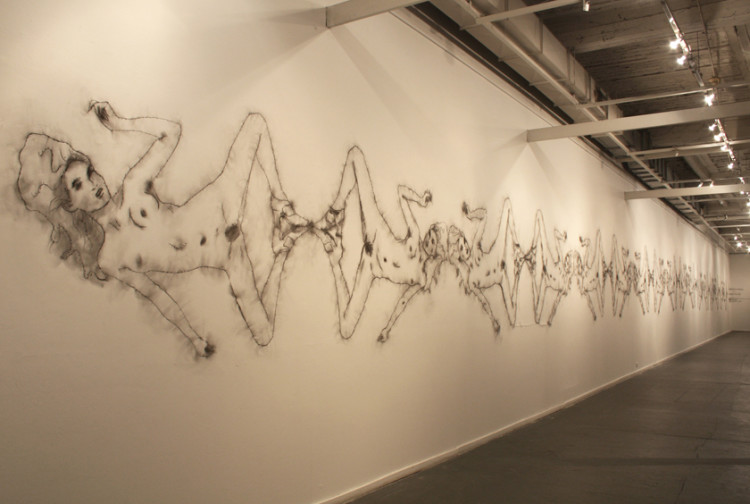
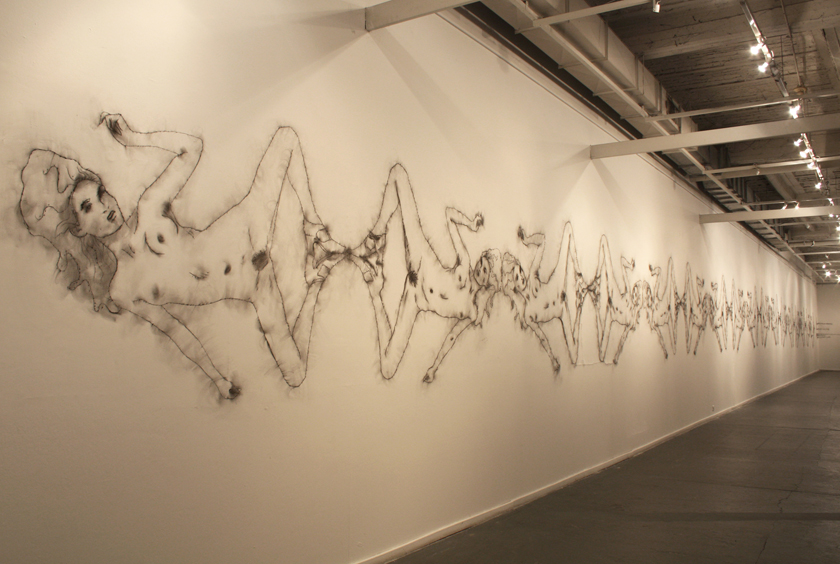
“Il disegno è in scena”
OMAR GALLIANI
25 November | 19 December 2010
Foyer Teatro India
Via Luigi Pierantoni, 6 – Roma
Text by Vittoria Biasi
The drawing is on stage exhibited by Omar Galliani at the Art Gallery ARTRIBU’ and edited by Carlo Proietti is an opportunity to get to know a few works presented by the artist in galleries throughout the world both East and West. India’s in Rome is a theatre placed into Mira Lanza’s abandoned warehouses that has been a site of research for years, transmits a sense of life diffused in time and space. In its foyer, bare and strong with topped vaults lighted sagaciously, Omar Galliani put seven large drawings from previous exhibitions in famous galleries. They are large board of poplar on which the artist designed wide black graphite background, making the images of virgins, of anatomies, of expressions, of staring looks, arose from the darkness to return an inner light. The chiaroscuro in each work got blood intrusions, anatomical surfacing, hinting at suggestions or ribs, disruption of calmness, opposition to the main expression.
The artist tells us that he prefers the drawing, his privileged language is a pathway to achieve the light of depths; an elegiac writing around the three kingdoms: the mineral for the use of graphite; the vegetable for the poplar and the animal for the figure, the human anatomy. The setting of works is exciting for the pagination of the half-light with the chiaroscuro of the drawing enlightened by a few lights, point out the expressive research and wander over the area clear of graphite.
The artist is fascinated by the poplar, used with no covering, in its natural way of existence and involvement in the alteration of time.
Omar Galliani says the dimming and the sedimentation of graphite cause the creation of image, representative of the conditions of being. The figurative identity comes from the guideline hidden in the vein of the wood or into the porousness of paper: the signs have got thicker on the surface according to a perception, a dialogue always new and never fixed in advance. The support interacts with the work due to natural processes: the poplar is alive, expands and contracts for the influence of climate, of seasons and is exposed to a tardy and progressive yellowing that ticks away the time, the connection with light.
Omar Galliani’s are large according to the masters of painting. India’s foyer shows the board Respiro (breath) (pencil drawing on board m. 4×4). It presents a skeletal section of a chest (human or animal?) that determines the environmental suggestion. Speaking of wide dimensions I like to remember the drawing realized upon the wall thirty-three metres long of Borges’ cultural centre in Buenos Aires edited by Alessandro Romanini and Massimo Scaringella. The linkage between the dimensions and the particular type of work classifies the O. Galliani’s among the great schools of history and communication.
Vittoria Biasi
Translated by Salvatore Roll salvatore_rollo@fastwebnet.it
Testo di Vittoria Biasi
La mostra di Omar Galliani Il disegno è in scena, proposta da La Casa d’arte Artribù a cura di Claudio Proietti, è un’occasione per conoscere alcune opere presentate dall’artista nei vari musei del mondo tra Oriente e Occidente. Il Teatro India di Roma, situato nei capannoni dismessi della Mira Lanza, da tempo luogo di sperimentazione, comunica un senso di esistenza diffusa nel tempo e nello spazio. Nel foyer nudo e intenso, dalle volte molto alte, con un’accorta illuminazione bassa, Omar Galliani ha collocato sette grandi disegni, provenienti da precedenti esposizioni in prestigiosi musei. Sono grandi tavole in pioppo, su cui l’artista ha disegnato vaste campiture in grafite nera, facendo sorgere dall’oscurità immagini di vergini, anatomie, espressioni, sguardi rivolti alla contemplazione, alla restituzione di una luce interiore. Il dialogo chiaroscurale, che scorre su ogni opera, ha intrusioni sanguigne, emersioni anatomiche, che alludono a segni o nervature a interruzioni di quiete, contrapposizione all’espressione dominante.
L’artista racconta che per lui il disegno, linguaggio privilegiato, è un percorso per raggiungere la luce del profondo; una scrittura elegiaca attorno ai tre regni: quello minerale con l’uso della grafite, il vegetale per il supporto costituito da legno di pioppo, l’animale con l’attenzione verso la figura, l’anatomia umana. L’ambientazione delle opere è emozionante per l’impaginazione della penombra con il chiaroscuro del disegno, illuminato con pochi momenti di luce, che sottolineano la ricerca espressiva e vagano sulle aree lasciate vuote dal lavoro della grafite.
L’artista è affascinato dal legno di pioppo, utilizzato senza rivestimenti, nel suo modo naturale di esistere e di partecipare alla trasformazione del tempo.
La velatura e la sedimentazione della grafite determinano la creazione dell’immagine, rappresentativa di stati dell’essere. L’identità figurativa, dice Omar Galliani, deriva dalla guida riposta nelle nervature del legno o nella porosità della carta: i segni si infittiscono sulla superficie secondo una percezione, un dialogo ogni volta nuovo e mai prestabilito. Il supporto interagisce con l’opera per dei processi naturali: la tavola di pioppo è un materiale vivo, si dilata, si restringe per influenza del clima, delle stagioni ed è esposto a un lento e graduale ingiallimento, che scandisce il fluire del tempo, il rapporto con la luce.
Le opere di Omar Galliani hanno grandi dimensioni, secondo la scuola dei maestri della pittura. Nel Foyer del teatro India la tavola Respiro (matita su tavola m. 4×4) presenta una sezione scheletrica del torace (umano o animale?) che determina la suggestione dell’ambiente. A proposito di grandi dimensioni voglio ricordare il disegno realizzato su circa 33 metri della parete del Centro Culturale Borges di Buenos Aires, a cura di Alessandro Romanini e Massimo Scaringella. Il rapporto con le dimensioni e con la particolare natura dell’opera fa collocare l’arte di Omar Galliani tra le grandi scuole della storia e della comunicazione.
Vittoria Biasi

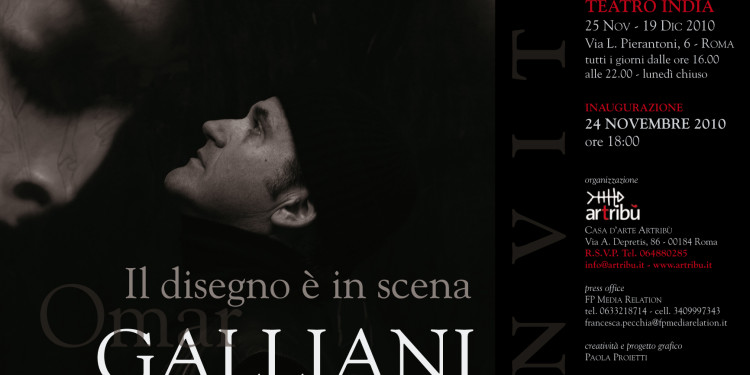
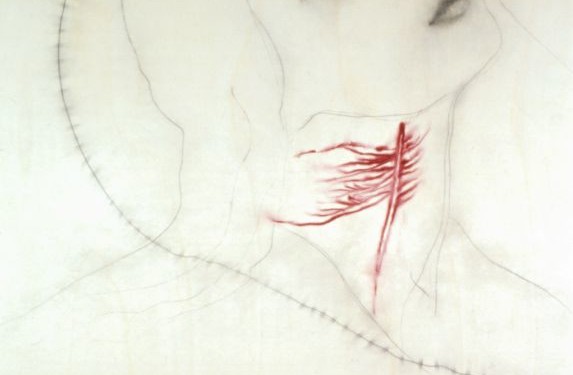
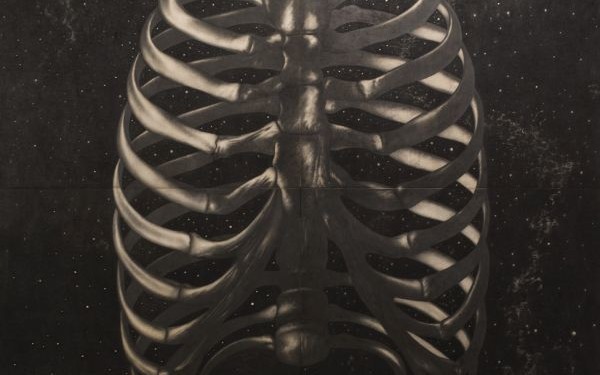
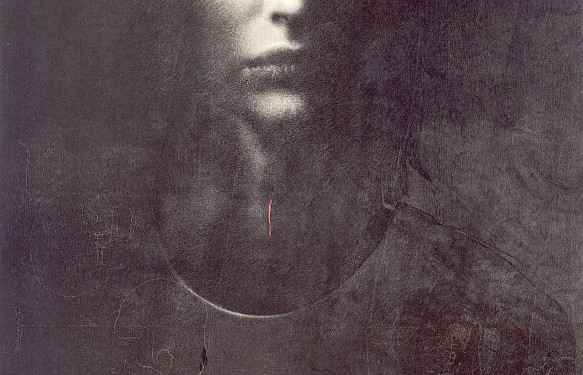
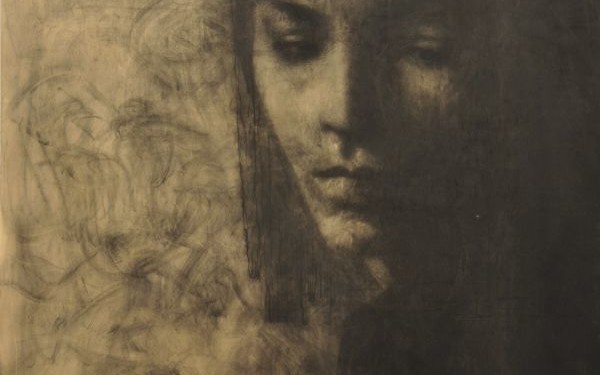
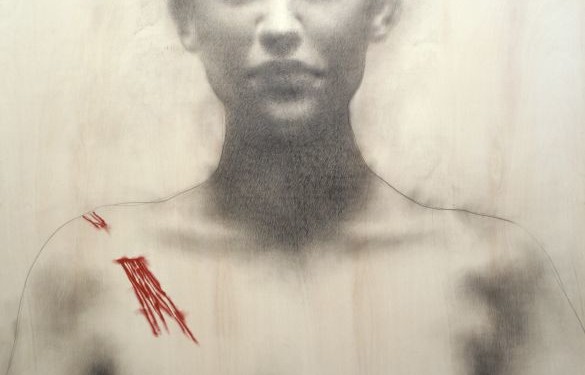
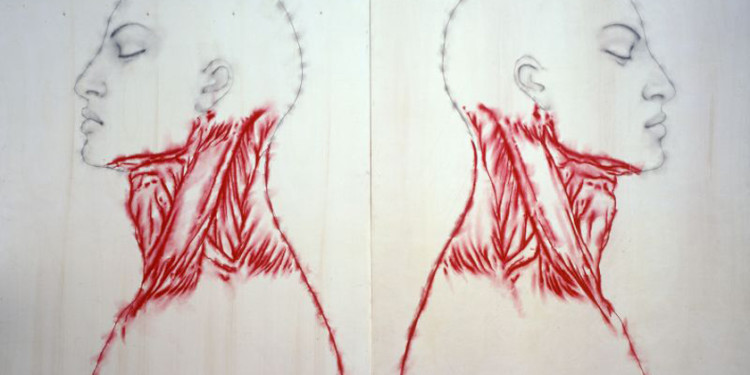
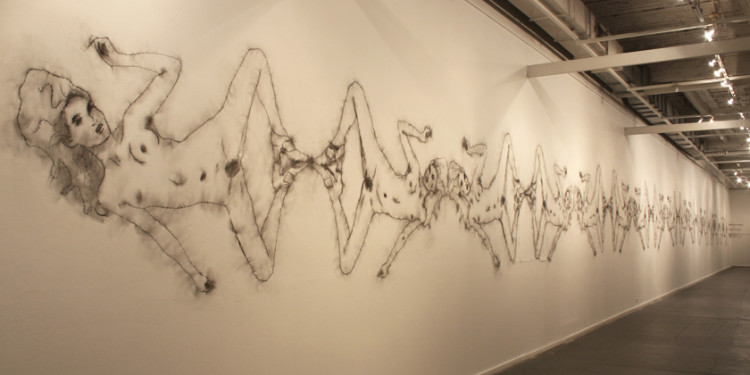

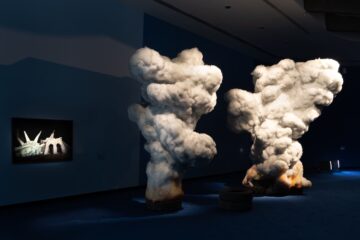



No Comment